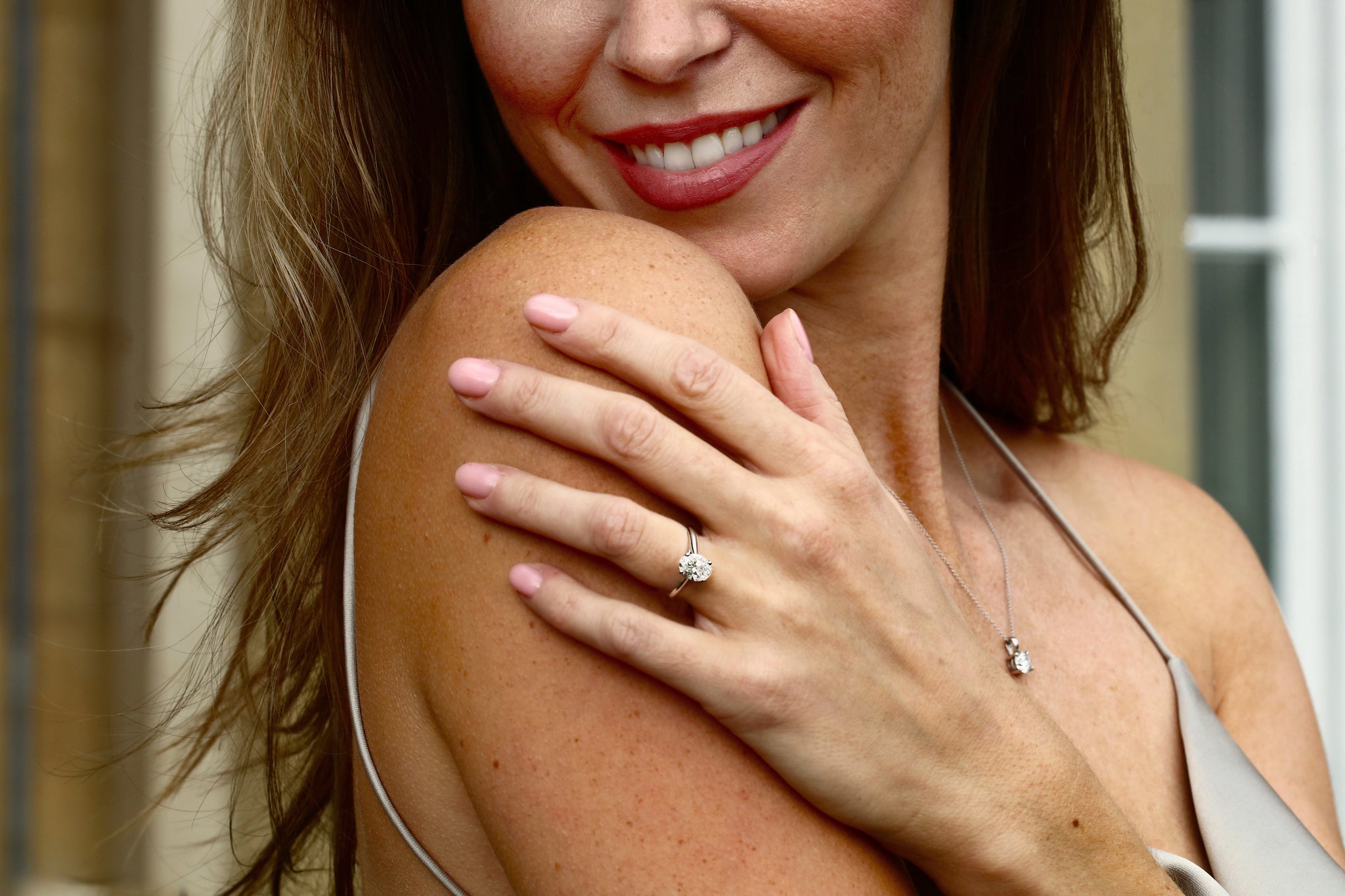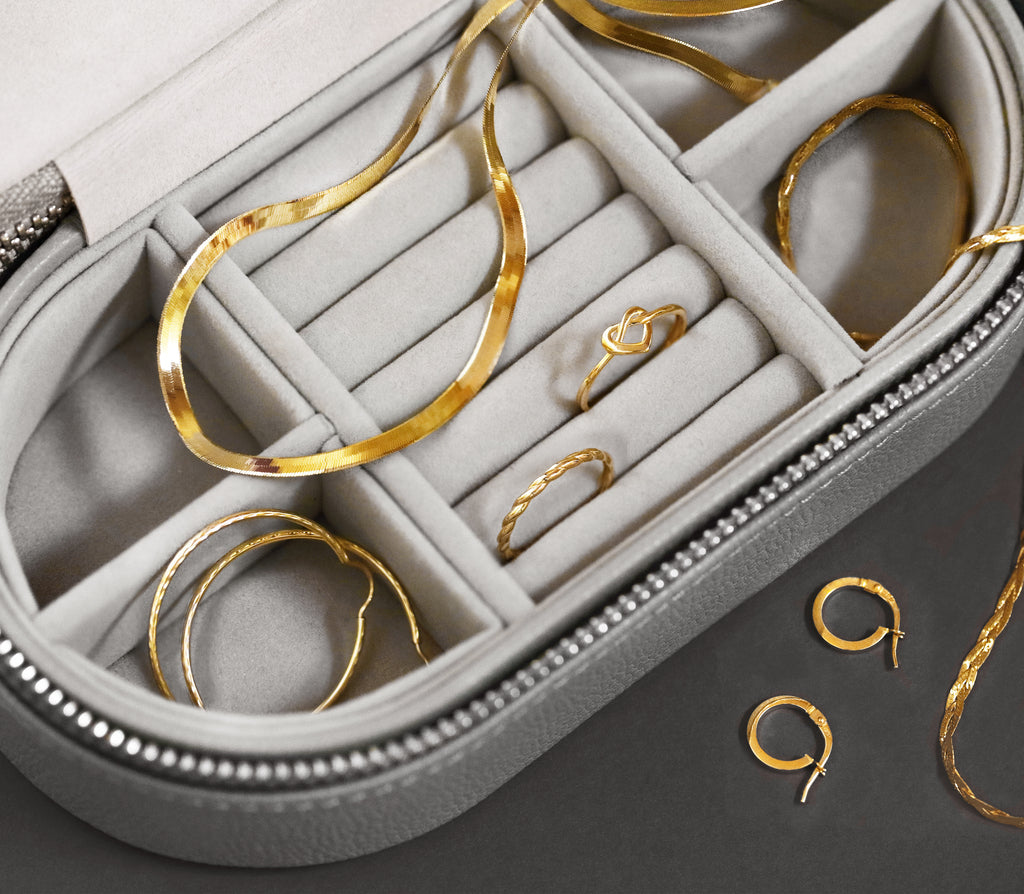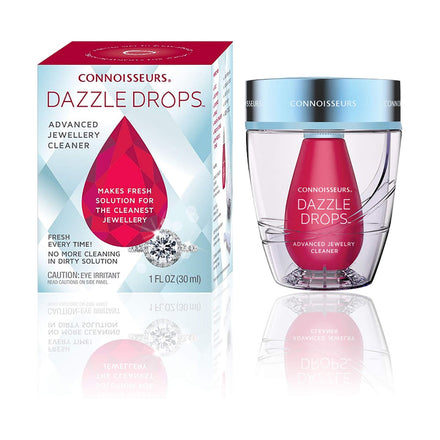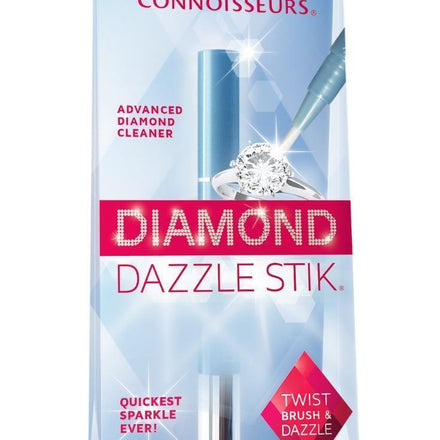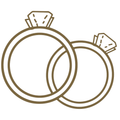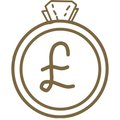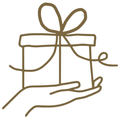Having done the hard work of finding the perfect person to spend the rest of your life with, you’d think that picking out an engagement ring would be simple. But, for many of us, finding the perfect engagement ring is a challenge. There are seemingly endless designs to choose from (which, to the untrained eye, can look much the same), and there’s a great deal of new terminology to learn too. So, it’s not unusual to feel overwhelmed or even intimidated by the prospect of selecting the right engagement ring.
That’s why this engagement ring guide is so comprehensive. From cuts to carats, settings to shapes, we’ll walk you through everything you need to know about buying an engagement ring.
Read on to learn some invaluable tips for buying an engagement ring, finding out about what to look for in a diamond engagement ring and how to avoid making common mistakes. This is a useful guide if you’re buying a ring to surprise your partner, but remember that you can also use it if you’re choosing one for yourself or are shopping for one as a couple.
Identify your budget
First and foremost, you’re likely to be governed by your budget when you’re choosing an engagement ring. So, start by taking a look at the funds you have available and give some thought to the amount you want to spend. It might be helpful to ask friends and family members if they mind telling you what they have spent on engagement rings in the past, so that you can feel confident you’re not setting your budget too high or too low. But, bear in mind that you should only use their feedback as a rough guide.
What should you spend on an engagement ring?
Doubtless you’ll have heard that you should spend 1 or 2 month’s salary on an engagement ring. However, this is just something that some people choose to do. There are no rules, and the amount you spend doesn’t necessarily reflect the depth of your love or commitment.
How much can you afford to spend on an engagement ring?
What matters most when you’re shopping for an engagement ring is that you don’t you spend more than you can afford to. You’ll find beautiful engagement rings to suit your budget here at Brown Family Jewellers, however modest or generous it is. Just build in a little contingency into your budget, or have an idea of your absolute upper limit in the event of the perfect ring appearing - you’re likely to have an easier time narrowing down your options if you’re clear about your top price.
Consider Your Partner’s Perfect Style
Next, you’ll need to give some careful thought to what you think your partner is going to like. This is perhaps the most intimidating part of the process, as you’ll undoubtedly want to present them with something they’ll want to wear forever. But, there are a few ways to make identifying your partner’s perfect style a stress-free process, so that you feel confident you’re choosing the right ring.
Reflect on what you already know
If you’re about to propose, there’s a good chance you know a bit about your partner’s perfect style already. For example, you’ll know:
- whether they typically wear jewellery or not
- what colour that jewellery tends to be
- whether their jewellery and clothing is minimalist and simple, or detailed and extravagant
- whether or not they follow fashion trends or prefer to shop for vintage pieces.
Recall previous conversations
If you’re lucky, your partner may have already told you (or at least dropped some hints) about the kind of ring they’d like, in which case, you have a head start. But even if not, you might be able to recall instances where they expressed admiration for a friend or family member’s engagement ring. Cast your mind back to see if you have any insight into what your other half might like.
What is their lifestyle like?
It’s also worth considering your partner’s lifestyle when you’re choosing an engagement ring. If they’re sporty or work with their hands to craft, cook or build things (for example), a very prominent or large diamond might not be quite right for them. There are numerous other styles you can consider that are just as impactful and beautiful.
Who can help you?
If you still don’t know where to begin, where your partner’s perfect style is concerned, consider asking for some help. Input and advice from close friends and family members could prove invaluable.
What To Look For When Picking Out An Engagement Ring
Now that you’ve given some thought to your budget and what your other half might like, you need to know how to shop for an engagement ring. That means understanding what words like colour, cut, clarity and carat mean, as well as setting types, metal options and shapes. Familiarise yourself with the terms below so that you know exactly how to pick out an engagement ring that’s of high quality, ensuring it’s worth every penny.
The 4 C’s
When you’re shopping for an engagement ring, there are four things you need to pay close attention to. These are termed ‘the 4 Cs’ and refer to colour, cut, clarity and carat.
Colour
Colour refers to the colour of the diamond(s) on the ring. The most valuable colour is white (meaning colourless), and it operates on a sliding scale from D (the highest rating - colourless) through to Z. In between these two ratings you’ll see that diamonds have subtle coloured tones.
However, don’t be put off by diamonds that aren’t completely colourless. The metal used on the band (something you’ll learn more about later on this guide) has a significant impact on the overall effect. For example, a H grade diamond might look very clear against a rose gold band, whereas a G grade diamond might not look quite as clear against a platinum band.
Also, coloured diamonds can often be very valuable, or might be exactly what your other half would love most of all. For example, a pink diamond or a ruby red diamond might be the perfect choice for your partner and therefore shouldn’t be disregarded just because it’s not ‘colourless’.
Cut
The cut is the measure of a diamond’s light performance - essentially, the way it shimmers and twinkles in the light. If a diamond has been cut with the right proportions, the light will be returned out of the top of the diamond. If it’s been cut a bit too deep, light will escape out of the sides and reduce the ‘brilliance’. And if it’s cut too shallow, light will leak out of the bottom so it doesn’t ‘dazzle’ as much as it ought to. So, when you’re picking an engagement ring, ask for details about the cut and choose the best you can afford.
Clarity
Clarity refers to the imperfections in a diamond. The fewer the imperfections (or ‘inclusions’, as they’re also referred to), and the less visible they are, the higher the clarity ‘grade’ of the diamond is. As you might expect, the higher the the clarity grade, the more valuable the engagement ring will be.
However, many inclusions are completely invisible to the naked eye. So, while an expert will see those imperfections under a microscope, it’s unlikely anyone will be able to see them on a day to day basis. Again, choose the highest clarity grade you can afford, opting for an ‘eye-clean’ diamond that’s graded VS1 or higher if you don’t have a particularly large budget.
Carat
A diamond’s weight is measured in carats (not to be confused with karats - a measure of the purity of gold), and as you might expect, the heavier the diamond (and therefore often the larger), the more valuable it is. Most diamonds start at 0.25 carats and go up to 3 carats.
Which Of The 4 C’s It The Most Important?
All four of these factors are important to consider together, but the one that has the most significant impact overall is the cut of the diamond. So, choose the best cut you can afford.
Diamond Shapes
Once you’ve come to understand the 4 C’s, it’s time to turn your attention to the shape of the diamond itself. Sometimes referred to as the diamond cut (not to be confused with the kind of cut explored above), choosing the shape of the diamond is is one of the major decisions to make.
It’s likely that your partner will have some idea of the shape of the diamond they’d like to wear, and the one you choose will ultimately have a significant impact on how the ring is received. Below is a brief overview of the types of diamond shape available for you to consider.
Round
The most popular option for an engagement ring, a round diamond is perfect if your partner is a traditionalist. It’s simple, classic and utterly timeless, and cut enables the light to return easily, making it a sparkling, eye-catching option.
Oval
An oval diamond is similar to a round diamond, but a little bit different given its slightly elongated length. It’s very flattering to wear as it appears to lengthen and slim the finger, and suits those who like classic styles with a contemporary edge.
Pear
The pear diamond is also sometimes referred to as a teardrop diamond due to its rounded end and pointed tip. It’s sophisticated and just as flattering as the oval diamond in the way it elongates the finger. It’s entirely up to your partner to choose which way they wear it, with the pointed tip pointing towards or away from the wrist.
Marquise
A Marquise diamond is luxurious, glamorous and perfect for those who like to stand out from the crowd. However, it’s still a very traditional style given that it’s rumoured to have been created at the request of King Louis XIV. It’s ideal if you want to make the most of a high carat weight, and again, it’s a very flattering diamond shape to elongate the finger.
Heart
Heart shape diamonds are a romantic shape to choose - ideal if your partner wants something a little different that’s guaranteed to turn heads. It’s a complex shape that requires the expertise of a skilled jeweller, producing a result that’s very romantic indeed.
Cushion
A cushion diamond is cut in a square shape with rounded corners that resemble a cushion or pillow. It’s an excellent style if you want to present your special someone with a diamond that dazzles in the light, and it’s a classic look too given that it’s been popular for more than a century.
Emerald
A bold and sophisticated shape, an emerald diamond is a show-stopper. Cut into a rectangular shape with truncated corners and step cut that resembles stair steps when viewed from above, it was a popular choice during the Art Deco period of the 20th century. So, it’s the perfect style if your partner likes vintage styles or fashions from bygone eras.
Asscher
Typically described as resembling a square emerald, you can consider the asscher diamond as a cross between a cushion and an emerald diamond. The square shape, deep pavilion and step cut makes it a ring with excellent lustre, and seems to create a ‘hall of mirrors’ effect - perfect if your special someone wants to turn heads with their engagement ring.
Princess
Considered the square version of the classic round cut, the princess cut is a timeless, sophisticated diamond for those who like traditional jewellery. Its bevelled sides mean that it glints and sparkles as it catches the light, and looks magnificent on individuals with long fingers.
Radiant
Radiant diamond shapes are rectangular and offer a fantastic sparkle. Their longer length helps to elongate the finger, but their simple design ensures plenty of light return for a dazzling overall effect.
You can find more information on the 4 C’s and diamond cuts by reading our Diamond Buying Guide.
Setting
Once you’ve decided upon the cut and shape of the diamond, you’ll need to give some thought to the setting. To some extent, the type of diamond you’ve chosen will determine the setting, but if you’ve chosen a diamond shape than can be accommodated in any setting, it helps to know what they all mean. Here’s a brief explanation of each.
Solitaire
Sometimes referred to as a classic setting, or a prong setting, a solitaire setting looks like a little metal claw that grips the diamond and holds in place. The majority of these settings consist of either four or six prongs - the one you choose will determine how much of the diamond you can see, and how secure the diamond is.
A solitaire setting elevates the diamond and ensures that it’s more prominent. It’s a very attractive style as it allows more of the diamond to be seen, as well as allowing a great deal of light to pass through for excellent sparkle. And, as its name suggests, it’s a traditional setting too, so it won’t date or go out of fashion.
Shoulder
Shoulder settings feature a central diamond, with accompanying diamonds accenting the ‘shoulder’ of the band. As a result, this style offers plenty of sparkle and glamour, so it’s a great choice if your partner leans towards luxury rather than minimalism.
Shoulder settings are also a very flexible style as you can choose the smaller diamonds that make up the ‘shoulder’ of the engagement ring. Consider this setting if you have a more modest budget but would still like to present a ring that looks extravagant - the accompanying diamonds help to boost the overall sparkle and brilliance of the ring than a single diamond might be able to alone.
Halo
A halo setting refers to placing diamonds or other precious stones in a concentric circle around the central stone. If you have a smaller budget and therefore are buying a modest central diamond, the smaller diamonds surrounding it can create an excellent optical illusion to offset its dainty size.
A halo setting can boost the appearance of a centre diamond with a small carat, and it looks particularly dazzling as it benefits from all the light and sparkle from the collection of diamonds as a whole.
Trilogy
A trilogy setting is particularly romantic, as each of the three stones is said to represent the couple’s past, present and future. You can choose a trilogy engagement ring where each stone is the same size, or you can opt for the more traditional design where the central diamond is larger than the diamonds to either side.
As well as offering brilliant sparkle and shine, a trilogy setting allows you lots of flexibility if you want to include coloured diamonds in the engagement ring you choose.
Vintage
A vintage setting often involves delicate metalwork, and as a result is often an exquisite choice for an engagement ring that looks a little bit different from the norm. For example, a vintage setting can sometimes feature detailing on the metal work in patterns.
A vintage setting simply radiates charm and personality, and often reflects a particular time period such as the Art Deco, Edwardian or Victorian eras - so it’s one to consider if your partner would appreciate those kinds of qualities.
Metal Types
A final important factor to consider when picking out an engagement ring is the type of metal the band is created from. You have a number of options to choose from, so base your decision on appearance, strength and durability.
Yellow gold
Yellow gold is as traditional as it gets, so it’s the perfect choice if your partner wants to wear an engagement ring that’s timeless and won’t ever go out of style. Consider the fact that yellow gold is often best suited to those with warm or olive skin tones, whereas white gold or platinum rings tend to best be suited to those with cool skin tones. However, it will look beautiful regardless, so don’t stick by that opinion too firmly.
Rose gold
An unusual but romantic choice for an engagement ring, rose gold is growing in popularity. However, rose gold was a popular choice for engagement rings during the Victorian era too, so it’s also a choice of metal that’s classic as well as being a contemporary favourite. It’s made from a blend of copper and gold, so it’s an excellent choice if you think your special someone will want a ring that’s subtly different.
White gold
White gold is a traditional and popular choice for an engagement ring. That’s because it’s timeless, classic and easy to style. And, it’s a colour that easily complements the sparkle of any diamond you choose, and is a slightly more affordable alternative to platinum. White gold is best suited to those with cool skin tones, but it will look beautiful regardless, so don’t stick by that opinion too firmly.
Platinum
The best of the best, platinum engagement rings are the highest quality you can buy. Naturally white, a platinum engagement ring won’t fade to yellow and looks incredibly beautiful against any diamond you choose. It’s also naturally hypoallergenic, so it’s the right choice if your partner has sensitive skin.
Consider Designing Your Own Engagement Ring
We have a diverse range of engagement rings to browse here at Browns, but if you have a particular design in mind, you can design your own engagement ring. Contrary to what you may first believe, designing your own engagement ring isn’t something that’s reserved for those with the highest budgets, so do consider it.
Find Out Your Partner’s Ring Size
The element of surprise is a key factor in delivering the perfect proposal, so it’s important that you find out what your partner’s ring size is without giving the game away. If you think you can accompany your other half to a jewellery shop without spoiling the surprise, they will be able to measure their finger size for you.
You can also borrow a ring your partner wears (if you’re confident they won’t notice it’s missing for a little while) to use it as a reference. Trace around the inside of the ring onto a piece of paper and carefully return it to their jewellery box. Just be careful when doing this, as a ring worn on their middle finger or thumb will be much larger than a ring they’ll be wearing on their ring finger - you may need to reduce the final size a little.
If you’d prefer, you could simply slip one of your partner’s rings onto your finger and mark where the ring falls. Use our ring size guide to determine what size engagement ring you need, using that measurement.
If you still don’t know what your partner’s ring size is, select the ‘I don’t know’ option when you’re proceeding with your purchase. We will produce your ring to the standard size, and then you can contact us if you find that you need to have it resized.
What If The Engagement Ring Doesn’t Fit?
Once you’ve mastered shopping for an engagement ring, proposed and enjoyed the exhilaration of hearing “yes” from your other half, you might feel a little deflated if the ring doesn’t fit. However, try not to be too concerned. It’s not a disaster if the engagement ring doesn’t fit quite perfectly, we offer the first sizing complimentary within 6 months of your online order.
We hope you found this engagement ring guide useful. If you’re ready to start browsing engagement rings, view our collection here. Remember you can contact us if you have any queries - we’re more than happy to help you in any way we can. We wish you the best of luck with your proposal.


